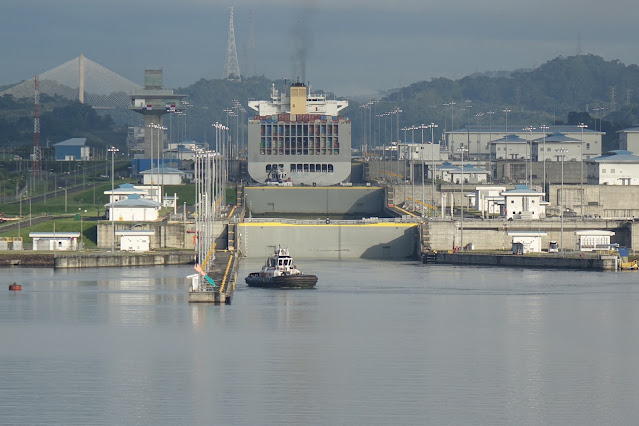Navigating the Panama Canal Once Again
Navigating the Panama Canal: A Journey through Cocoli and Aqua Clara Locks Amidst Drought Concern
Transiting the Panama Canal is an experience like no other. Recently, I embarked on a memorable journey from the Pacific to the Atlantic through the Cocoli and Aqua Clara locks. This iconic waterway never fails to astonish with its engineering marvel, but my transit was marked by a backdrop of environmental concerns as news of the Panama Canal limiting cruise lines due to drought dominated headlines.
The Journey through Cocoli and Aqua Clara Locks:
As our ship approached the Cocoli locks, I was filled with anticipation. I stayed on the bow to watch the whole process. The sheer scale of these locks and their modernity were striking. Having previously transited from the Atlantic to the Pacific via the Gatun and Miraflores locks, I couldn't help but notice the stark differences between the old and new locks, each offering a unique experience. The old locks, while undeniably dramatic, felt like stepping back in time. The anticipation built as our ship entered the chambers, and we watched in awe as the water levels rose, lifting us to the level of the Gatun Lake. The mechanics of this process were a sight to behold, with massive gates and valves working in harmony.
In contrast, the new Cocoli locks felt remarkably efficient and, dare I say, quicker. The difference was noticeable from the outset. The modern locks are larger and can accommodate larger vessels, making them more accommodating for the ever-increasing maritime traffic. The electric mules, used to guide and assist ships, are a testament to cutting-edge technology, ensuring a smoother and more controlled transit. Although the drama of water levels rising was less pronounced, it was replaced by a sense of precision and reliability that showcased the evolution of the Panama Canal's engineering prowess.
The Aqua Clara locks were equally impressive. These locks are part of the expanded Panama Canal and were designed to accommodate even larger vessels, ensuring the continued relevance of the waterway in global trade. The process was efficient, and the feeling of being part of modern maritime history was palpable.
Drought Concerns:
During our transit, a shadow hung over this engineering spectacle. News of the Panama Canal's decision to limit cruise lines' access due to drought concerns was on everyone's lips. This issue highlighted the environmental challenges faced by this vital waterway. The drought, driven by climate change and decreased rainfall, threatened the canal's operational capabilities and underscored the urgent need for sustainable water management practices.
The news of cruise lines being affected was a stark reminder that climate change impacts every aspect of our lives, even the marvels of human engineering. It made me reflect on the broader implications of climate change on the maritime industry and the need for global cooperation to address these challenges.
My recent transit through the Panama Canal via the Cocoli and Aqua Clara locks was a remarkable experience, showcasing the canal's continued evolution. However, it was also a poignant reminder of the impact of climate change on this iconic waterway. As we marvel at the engineering feats of the canal, we must also be conscious of the environmental challenges it faces and work collectively to ensure its sustainability for future generations. The headlines about drought and cruise line limitations serve as a call to action for responsible stewardship of this natural wonder and the planet as a whole.
PHOTO GALLERY:
NOTE:
- Link to Blog on transiting through the old locks: https://www.greencaviartravelblog.com/2012/10/panama-canal-worlds-most-famous-shortcut.html
- All photos by the author











Comments
Post a Comment